calsfoundation@cals.org
Rocks and Minerals
There are three basic classes of rocks: igneous, metamorphic, and sedimentary. Igneous rocks are those that solidified from magma (molten rock). Metamorphic rocks are formed from pre-existing rocks in a solid state by heat, pressure, and/or chemical activity. Sedimentary rocks are made up of particles of sediment cemented together. In Arkansas, the overwhelming majority of surface and near-surface rocks are sedimentary rocks. There are a few igneous rocks and some very low-grade metamorphic rocks, but these occupy little area. Out of Arkansas’s total area of 53,179 square miles, only about fifteen square miles are composed of igneous rocks. In the Ozark Plateau and Ouachita Mountains, there are indications of some very low-grade metamorphic effects on the rocks in restricted areas, but because their degree of alteration is slight, geologists still treat them as sedimentary rocks. A few true metamorphic rocks are found due to the alteration of the rocks immediately surrounding and in contact with the igneous intrusions.
All rocks are composed of mineral grains. A mineral is a chemical compound that has certain specific characteristics: it is naturally occurring, inorganic, and has a definite chemical composition and molecular structure within limits. Over 300 different minerals are found in Arkansas, either as discrete deposits or as the mineral grains making up the rocks themselves. Only a handful of these minerals are common.
The bedrock of the Ozark Plateau portion of Arkansas is made up of sedimentary rocks. Most of these rocks fall into just six major types: limestones, dolostones, cherts, sandstones, siltstones, and shales. A few conglomerates, breccias, and other types may occur in limited places. Few rock layers are pure, so many mixtures and combinations of these types will be found, such as shaly limestones or dolomitic sandstones. The sediments that make up these rocks were deposited in an ocean basin on a continental shelf. These sedimentary rocks were laid down in that marine environment from 543 to 248 million years ago during the Paleozoic era.
The limestones are composed primarily of the mineral calcite (CaCO3), derived predominantly from the shells and skeletons of the various animals and plants that lived in those ancient oceans. Dolostones are quite similar to limestones and are generally found in older rock layers (middle Ordovician period, about 460 million years ago, and earlier). Dolomite (CaMg(CO3)2) is the principal mineral of a dolostone. It is thought that most of the dolostone was once limestone that has been altered over time. Chert is a cryptocrystalline silica (SiO2) usually occurring as nodules or thin beds in certain intervals of limestone or dolostone. However, in a few places, chert has replaced the original bedrock and may make up a notable portion of the rock sequence. Sandstones and siltstones are very similar rock types, just differing in grain sizes that, in turn, reflect the different energy environments of the depositional setting. Almost all of the sand and silt making up these rocks are fragments of quartz (SiO2). By definition, sand-sized grains are between 1/16 mm and 2 mm in diameter; silt is between 1/256 mm and 1/16 mm in diameter. The shales are very fine-grained rocks composed mostly of clay and silt (mud). Shale is finely stratified and readily splits into thin layers. All of these rocks are composed of sediment grains cemented together. The most common cements are calcite, dolomite, quartz, clay, and iron oxide.
Long after the rock layers of the Ozarks were deposited and lithified (converted to stone), hydrothermal (hot water) solutions invaded these rocks where faults and/or porous rocks provided ready conduits from deep below. As the hot water solutions cooled, they deposited the various minerals dissolved in them. In places scattered across the region, small deposits of galena (PbS) and sphalerite (ZnS), along with quartz and traces of pyrite (FeS2) and chalcopyrite (CuFeS2), are present. As these hot solutions moved through the host rock, they dissolved some of the minerals making up the rock only to re-deposit them later upon cooling, leaving crystalline calcite and dolomite. Later and somewhat cooler solutions reacted with the earlier minerals to form various secondary minerals such as cerussite (PbCO3), smithsonite (ZnCO3), azurite (Cu3(CO3)2(OH)2, malachite (Cu2CO3(OH)2, and gypsum (CaSO4 · 2H2O).
Weathering and erosion have added some rock and mineral deposits to the region as well. Manganese and iron minerals concentrated by these processes occur in a few places. Groundwater has also left its mark by dissolving the limestones and similar rocks and then redepositing the dissolved calcite as crystalline calcite or aragonite (chemically the same as calcite but with a different molecular structure) as travertine, the rock of cave formations.
The Arkansas River Valley is underlain by sandstones, siltstones, and shales of Pennsylvanian age (323–290 million years ago). A few coal beds are contained in this sedimentary sequence. Deeper in the rock sequence, natural gas is present and is being produced. The flood plains and adjacent terraces of the Arkansas River and its tributary streams have deposits of gravel, sand, and mud of fairly recent origin. Although the Paleozoic rock layers are folded and faulted in this region, few minerals are found outside of those making up the rocks themselves.
The Ouachita Mountains are composed of sandstones, siltstones, shales, cherts, novaculites, and a few limestones. These sedimentary rocks were deposited in a deep ocean basin under thousands of feet of water. Novaculite is somewhat unique to the Ouachitas. It is a very dense, even-textured cryptocrystalline rock composed of microcrystalline quartz bound together. Novaculite is the rock that makes the very best whetstones (knife-sharpening stones).
Continental collision toward the end of the Paleozoic era complexly folded and faulted the rocks and pushed up the Ouachita Mountains. Hydrothermal fluid and contact alteration products associated with the uplift of the Ouachitas are common. The most famous of these is quartz, the official state mineral, widely present in the Ouachitas. Some other minerals in the Ouachita Mountains include barite (BaSO4), galena, sphalerite, cinnabar (HgS), stibnite (Sb2S3), variscite (AlPO4 · 2H2O), wavellite (Al3(PO4)2(OH,F)3 5H2O), and various copper (Cu) minerals. Millions of years later, igneous intrusions during the Cretaceous period (144 to 65 million years ago) introduced several unusual rock types such as syenite, ijolite, jacupirangite, carbonatite, lamproite, peridotite, and metagabbro. In general, these once-molten rocks are referred to as alkalic igneous rocks because of their relatively high alkali metal content. The most famous igneous intrusions in Arkansas are the Crater of Diamonds State Park and the alkalic complex at Magnet Cove (Hot Spring County) near Hot Springs (Garland County), named for the often abundant lodestone (magnetite (Fe3O4)) found there. Over 100 minerals have been reported from the Magnet Cove area. Some of the better-known minerals are rutile (TiO2), brookite (TiO2), eudialyte (Na4(Ca,Ce)2Fe+2,Mn+2,Y)ZrSi8O22(Oh,Cl)2), biotite (K(Mg,Fe)3(AlSi3O10)(OH)2), pyrope garnet (Mg3Al2(SiO4)3, and leucite (K Al Si2O6). Many of the mineral crystals in that area are very small. Mines in the region have produced barite, vanadium, and titanium in the past, but all mines are currently closed.
Just south of the Ouachita Mountains in southwest Arkansas, along the northern margin of the West Gulf Coastal Plain, occurs an area underlain by Cretaceous-age sand, gravel, clay, marl, chalk, limestone, volcanic tuff and ash, and gypsum. These rocks and sediments were deposited in the shallows of the ancient Gulf of Mexico. The sands and gravels are composed of fragments of novaculite, chert, sandstone, and quartz eroded from the Ouachita Mountains during the Cretaceous age. Marl and chalk are limestones containing a lot of clay and are soft and/or earthy. Sections of this shallow depositional sea occasionally became isolated from the open ocean and dried out. As the sea water evaporated, the various minerals dissolved in the sea water were precipitated into beds of salt (NaCl) and gypsum, sometimes with nodules of celestine (SrSO4). The salt was quickly dissolved and removed by rain and groundwater, leaving only impressions of its crystals in the mud as evidence that it was once there. The gypsum, however, accumulated in thick beds that are mined today to make sheetrock.
Also during the Cretaceous age, a stretching of the earth’s crust cracked and opened ancient weaknesses into deep reservoirs of molten rock. This allowed igneous rocks to intrude the Paleozoic and early Cretaceous rock sequence. These rocks usually occur as small dikes, sills, and pipes, but a handful of the emplacements are larger and cover a few square miles. The smaller intrusions tend to be difficult to find because the rocks have often weathered to clay near the surface. These intrusions also generated a degree of alteration of those rocks surrounding the original magma and developed a wide variety of unusual rock types and minerals via contact metamorphism. A few of these cracks rose from a great depth in the earth’s crust where diamonds are formed. These same cracks allowed these magmas to reach the surface and cool into the rock lamproite before the diamond crystals had time to be altered to other carbon minerals. The Crater of Diamonds State Park is on top of one of these magma pipes, and along with diamonds (C), several other high-pressure minerals have been noted to be associated with the lamproite intrusion, such as olivine ((Mg,Fe)2(SiO4)), chromite (Fe2Cr2O4), periclase (MgO), and pyrope (Mg3Al2(SiO4)). Diamond is the official state gem.
Some volcanoes spewed ash that rained down and left beds of tuff now found in the rock sequence of southwest Arkansas; however, most of these intrusions failed to reach the surface and solidified into intrusive igneous rock masses. The largest deposit of these intrusive igneous rocks is the nepheline syenite, now exposed, making up the area around Granite Mountain in central Arkansas. (It should be noted that there is no granite on Granite Mountain.) Nepheline syenite is dominantly composed of the feldspar mineral orthoclase (K(AlSi3O8)) and, to a much lesser degree, nepheline ((Na,K)(AlSiO4). The ferromagnesian minerals biotite (K(Mg,Fe)3(AlSi3O10)(OH)2) and hornblende (Ca2Na(Mg,Fe+2)4(Al,Fe+3,Ti)(Al,Si)8O22(O,OH)2) are also present, along with a few other minor accessory minerals. As erosion exposed the syenite to surface environments during the Paleocene epoch (65 to 55 million years ago), the rock weathered down to become bauxite, the ore of aluminum. Bauxite is the official state rock and was mined, primarily in Pulaski and Saline counties, through much of the twentieth century. Several other igneous intrusions are present throughout the Ouachitas, Arkansas River Valley, and in at least one place in the Ozarks, but they occupy less than .03 percent of the surface area of the state. These tend to be of rare and unusual rock types. Many rare minerals are found associated with them or in the altered zones of the immediately surrounding rocks.
The post-Cretaceous age deposits of the Western Gulf Coastal Plain and the Mississippi River Alluvial Plain of southern and eastern Arkansas are underlain by sand, silt, clay, and gravel. Most of these deposits are not lithified, but there is some limonite (iron oxides) cementation of some layers and nodules in places. On Crowley’s Ridge a windblown dust called loess is found. The thickest exposures of loess are toward the southern end of the ridge. In a few places on the northern end of the ridge on the west side, sandstone with quartz cement called quartzite also occurs.
Thirteen minerals were first discovered in Arkansas. They are: artsmithite (Hg+14Al(PO4)2-x(OH)1+3x, where x=+0.26), benstonite ((Ba,Sr)6(Ca,Mn) 6Mg(CO3)13), delindeite ((Na,K)3(Ba,Ca)4(Ti,Fe,Al)6Si8O26(OH)14), eggletonite ((Na,K,Ca)2(Mn,Fe)8(Si,Al)12O29(OH)7 11H2O), haggertyite (Ba(Ti5(Fe+2)4(Fe+3)2Mg)O19), kidwellite (Na(Fe+3)9(PO4)6(OH)10 5H2O), kimzeyite (Ca3(Zr,Ti)2(Si,Al,Fe+3)3O12), lourenswalsite ((K,Ba)2(Ti,Mg,Ca,Fe)4(Si,Al,Fe)6 O14(OH)12), mahlmoodite (F+2Zr(PO4)2 · 4H2O), miserite (K(Ca,Ce)6Si8O22(OH,F)2), rectorite (interstratified pyrophyllite (Al2Si4O10(OH)2) and vermiculite ((Mg,Fe+2,Al)3(AlSi)4O10(OH)2 · 4H2O) ), schorlomite (Ca3Ti+42(Fe+32Si)O12), and straczekite ((Ca,K,Ba)2(V+5,V+4)8O20 ·3H2O). Most of these minerals were named for the people who found them or were important in their discovery. All are somewhat rare.
For additional information:
Arkansas Geological Survey. http://www.state.ar.us/agc/agc.htm (accessed August 17, 2023).
Haley, B. R., et al. Geologic Map of Arkansas. Little Rock: Arkansas Geological Commission, 1976.
Howard, J. Michael. Mineral Species of Arkansas, A Digest. Arkansas Geological Commission Bulletin 23. Little Rock: Arkansas Geological Commission, 1987.
Howard, J. Michael, George W. Colton, and William L. Prior. Mineral, Fossil-Fuel, and Water Resources of Arkansas. Arkansas Geological Commission Bulletin 24. Little Rock: Arkansas Geological Commission, 1997.
McFarland, John David. Stratigraphic Summary of Arkansas. Arkansas Geological Commission Information Circular 36. Little Rock: Arkansas Geological Commission, 2004.
McFarland, John David, and J. Michael Howard. Minerals of Arkansas: An Electronic Database. CD-ROM. Arkansas Geological Commission Geologic Software Series 1. Little Rock: Arkansas Geological Commission, 2003.
Stroud, R. B., et al. Mineral Resources and Industries of Arkansas. U.S. Bureau of Mines Bulletin 645. Washington DC: U.S. Department of the Interior, Bureau of Mines, 1969.
John David McFarland
Arkansas Geological Survey
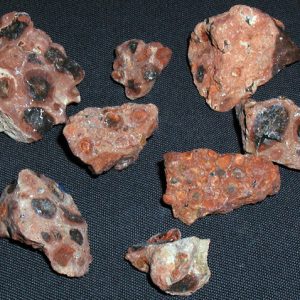 Bauxite, Official State Rock
Bauxite, Official State Rock  Benstonite
Benstonite  Carpet Rock
Carpet Rock  Crater of Diamonds
Crater of Diamonds 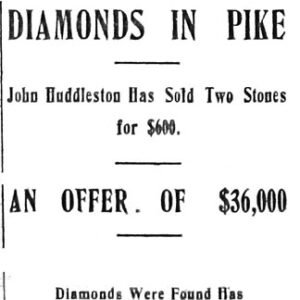 Diamond Discovery Announcement
Diamond Discovery Announcement  Kidwellite
Kidwellite  Kimzeyite
Kimzeyite  Liesegang Weathering
Liesegang Weathering 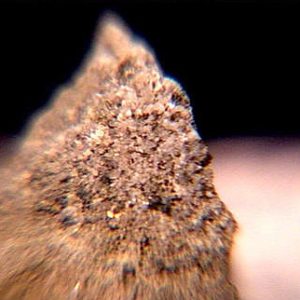 Mahlmoodite
Mahlmoodite  Map of Peridotite for Diamond Mining
Map of Peridotite for Diamond Mining 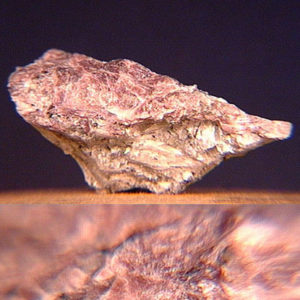 Miserite
Miserite 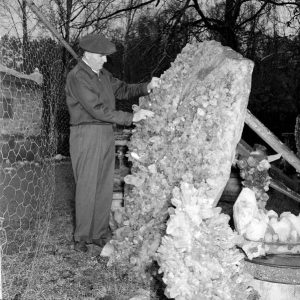 Quartz Crystal Formation
Quartz Crystal Formation 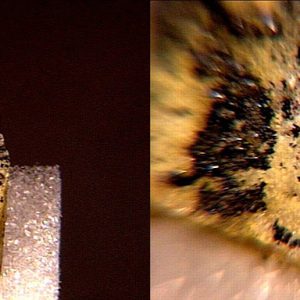 Straczekite
Straczekite 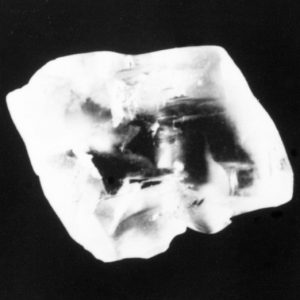 Uncle Sam Diamond Rough
Uncle Sam Diamond Rough 




Comments
No comments on this entry yet.